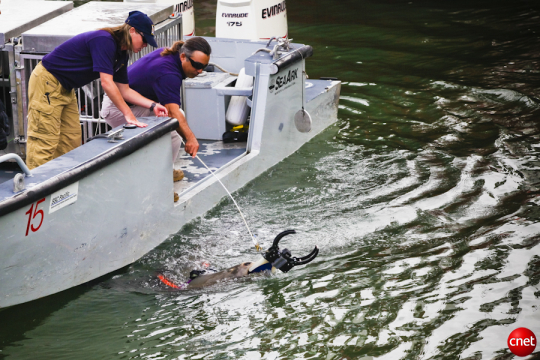Cute lyrics…”you know me, I hit her with a jQuery”
Monthly Archives: June 2010
Cloud Architecture: Mother of All Lock-ins?
The CEO of Red Hat, Whitehurst, was quoted by Computerworld today regarding proprietary architecture:
Cloud architecture has to be defined in a way that allows applications to move around, or clouds can become the mother of all lock-ins, warned Red Hat’s CEO James Whitehurst.
This begs the question of incentives. At first glance it seems vendors have every reason to make exit cost high for customers. It helps them ensure loyalty to a platform that has recurring revenue.
However, when security is factored, the exit cost has an additional risk that vendors and service managers must take into account.
Take for example the issue Microsoft has convincing users of version six of their web browser (IE6) to upgrade, as I posted recently. Jeremiah Grossman, CTO of White Hat Security sent me a nice summary in response:
MS is suffering the long term effects of successful proprietary technology.
A web browser is free, which alters the model slightly compared with cloud services, but it sill illustrates a situation where vendors have a big incentive for an easy exit path. I will skirt the issue of whether open systems are more secure than closed. Suffice it to say that given the rate of discovery for software flaws every cloud vendor should be a huge advocate for the benefits of an easy upgrade/migration path.
The Network Solutions breach is another example. At the time of compromise the company revealed a vast number of accounts ran applications on a service still supported but “old and no longer in development”. While both the old and new platforms were compromised a single re-architecture and security fix surely could have been less costly. Did the cost of the fix exceed the cost of a migration path?
Thus, the requirement for a well-managed security life-cycle can help foresee and dissipate risks related to lock-in. Computerworld unfortunately does not mention security in the article. Instead they focus on the usual cloud topics such as performance and resource allocation/sharing.
To be able to move a workload from a data center to a cloud or between two clouds, a connecting API (application programming interface) is needed, and there are a plethora of different ones being developed. Fewer would be better, according to Whitehurst. However, the real challenge isn’t the API, but ensuring that the application will run with the same performance when it has been moved. That is what Red Hat is focusing on. Getting an API in place that allows a workload to be moved is only 10% of the work, Whitehurst said.
Performance. Access to resources that scale is an obvious benefit. Performance gains definitely drive cloud projects as well as marketing. A less obvious benefit, apparently, is the ease of migration from insecure to secure platform (including physical to virtual). How many customers today feel locked-in to old and obsolete hardware that keeps them exposed to known security risks?
Migration tools that break hard-ware lock-ins like Microsoft’s disk2vhd, which I profiled earlier, are not only good for the customer but good for the vendors. Microsoft really, really wants you to stop running NT4 — there is a point at which the proprietary/lock-in model actually hurts the vendor. That is why I would say good migration strategy benefits the vendors as well as customers; helps avoid obsolescence and significantly reduces the cost of managing security. This makes Whitehurt’s point about avoiding lock-ins even more poignant.
Pigeon Accused of Spying
My joke about surveillance seagulls is more relevant than I could have ever imagined. An amusing story called “Pak pigeon has police in flutter” has been published in the Hindustan Times
In an era of spy planes and satellites, the Amritsar (rural) police have detained a white pigeon that could have been — the police claim — used as a Pakistani spy.
The pigeon was reportedly spotted in Ramdas, a tiny town close to the Indo-Pak border, with a Pakistani stamp imprinted and a Pakistani phone number written on its feathers.
What happens if you call the number?
US Navy Sea Mammal Training
A curious-looking sea lion approached a boat I was sailing the other day. I had a good laugh with the crew on board about how it must represent the latest Naval surveillance technology…”look out, a seagull-drone also is watching”. It turns out the joke was really on us, according to a report this week by CNET.
At Pier 48 in San Francisco, the city’s police and fire departments, along with its Emergency Operations Center, conducted a drill demonstrating the ability of dolphins and California Sea Lions to help protect coastal areas from maritime attacks.
No word on seagulls but they fit nicely into this picture. Could an octopus could be trained? They would be able to operate without a mechanical clasp like the one required for a sea lion:
I have to wonder how mammals are evaluated for this job. It is not very clear from the story.
Using highly trained dolphins and sea lions selected for their quickness, intelligence, detection capability, and mobility, officials demonstrated the unique ability of these animals to identify and neutralize threats in cooperation with human teammates.
Selected? Obviously they do not enlist. Does this rule out monkeys? What about chimpanzees, pigs or birds? Are dogs the only other animal that has been drafted for US military training? How does the military account for the cost and time of training a dolphin or sea lion? An artificial shark robot seems like a more humane approach, maybe more cost-effective, to this kind of underwater explosive detection and removal operation.
Remember Roboshark2? I have not heard anything since the big splash in 2003.
